
Francisco José de Goya y Lucientes was a Spanish romantic painter and printmaker. He is considered the most important Spanish artist of the late 18th and early 19th centuries. His paintings, drawings, and engravings reflected contemporary historical upheavals and influenced important 19th- and 20th-century painters. Goya is often referred to as the last of the Old Masters and the first of the moderns.

The Piano Concerto in A minor, Op. 54, by the German Romantic composer Robert Schumann was completed in 1845 and is the composer's only piano concerto. The complete work was premiered in Dresden on 4 December 1845. It is one of the most widely performed and recorded piano concertos from the Romantic period.
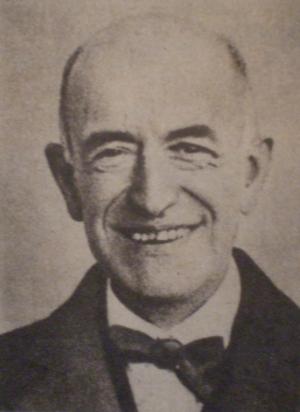
Manuel de Falla y Matheu was an Andalusian Spanish composer and pianist. Along with Isaac Albéniz, Francisco Tárrega, and Enrique Granados, he was one of Spain's most important musicians of the first half of the 20th century. He has a claim to being Spain's greatest composer of the 20th century, although the number of pieces he composed was relatively modest.
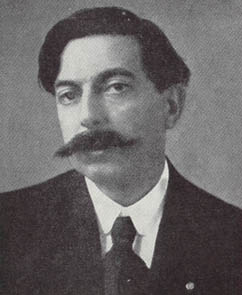
Pantaleón Enrique Joaquín Granados y Campiña, commonly known as Enric Granados in Catalan or Enrique Granados in Spanish, was a composer of classical music, and concert pianist from Catalonia, Spain. His most well-known works include Goyescas, the Spanish Dances, and María del Carmen.

Encarnación López Júlvez, known as La Argentinita, was a Spanish-Argentine flamenco dancer (bailaora), choreographer and singer. La Argentinita was considered the highest expression of this art form during that time.
"Bésame Mucho" is a bolero song written in 1940 by Mexican songwriter Consuelo Velázquez. It is one of the most popular songs of the 20th century and one of the most important songs in the history of Latin music. It was recognized in 1999 as the most recorded and covered song in Spanish of all time. Famous versions were sung by Trio Los Panchos and female vocalist Gigliola Cinquetti in 1968, and by Dalida in 1976. English lyrics to it were written by Sunny Skylar.

The Naked Maja or The Nude Maja is an oil on canvas painting made around 1797–1800 by the Spanish artist Francisco de Goya, and is now in the Museo del Prado in Madrid. It portrays a nude woman reclining on a bed of pillows, and was probably commissioned by Manuel de Godoy, to hang in his private collection in a separate cabinet reserved for nude paintings. Goya created a pendant of the same woman identically posed, but clothed, known today as La maja vestida, also in the Prado, and usually hung next to La maja desnuda. The subject is identified as a maja or fashionable lower-class Madrid woman, based on her costume in La maja vestida.
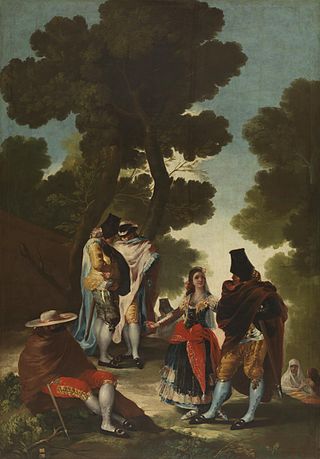
Goyescas, Op. 11, subtitled Los majos enamorados, is a piano suite written in 1911 by Spanish composer Enrique Granados. It was inspired by the work of the Spanish artist Francisco Goya. The piano pieces have not been authoritatively associated with any particular paintings with two exceptions:
Thomas Rajna was a British pianist and composer of Hungarian birth. He had been domiciled in Cape Town in South Africa since 1970.
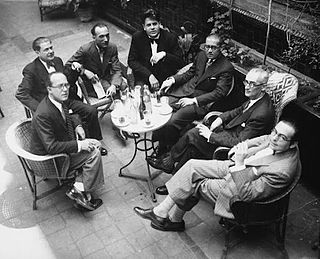
Ricard Lamote de Grignon i Ribas was a Catalan Spanish composer and orchestral conductor.

Flora Perini was an Italian operatic mezzo-soprano who had a prominent opera career in Europe, South America, and the United States during the first half of the twentieth century. She sang a wide repertoire that encompassed works by verisimo composers like Mascagni, bel canto composers like Rossini and Bellini, the Italian grand operas of Verdi, the German operas of Strauss and Wagner, and the Russian operas of Rimsky-Korsakov. She sang in numerous premieres throughout her career, including creating the role of the Princess in the original 1918 production of Puccini's Suor Angelica.

María del Carmen is an opera in three acts composed by Enrique Granados to a Spanish libretto by José Feliú i Codina based on his 1896 play of the same name. It was Granados's first operatic success and, although it is largely forgotten today, he considered it to be his best opera. At the end of its initial run in Madrid where it premiered in 1898, Queen Maria Cristina awarded Granados the Charles III Cross in recognition of his work. The opera, sometimes described as a Spanish version of Mascagni's Cavalleria rusticana with a happy ending, is set in a village in the Spanish region of Murcia and involves a love triangle between María (soprano) and her two suitors, the peasant farmer, Pencho (baritone), and his wealthy rival, Javier (tenor).
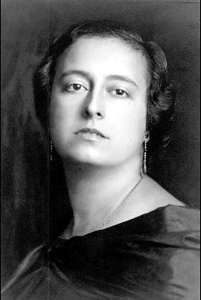
Concepció Badia Millàs was a Spanish soprano and pianist. Admired for her spontaneity, expressiveness, and clear diction, she was considered one of the greatest interpreters of 20th century Catalan, Spanish and Latin American art song. She premiered many works in that genre, including those by Enrique Granados, Manuel de Falla, Frederic Mompou, Alberto Ginastera, and Enric Morera, several of which had been specially written for her voice. The main part of the collection of Badia's sound recordings, scores, letters and pictures is preserved in the Biblioteca de Catalunya. In one of the letters, Pablo Casals wrote: "Everything I've written for a soprano voice has been thinking about you. Therefore, every one is yours."
Thomas Davis Cunningham was an American tenor who had prominent career in operas, musicals, concerts, and on television from 1949 through 1973.

Anna Fitziu was an American soprano who had a prolific international opera career during the early part of the 20th century. Her signature roles included Fiora in L'amore dei tre re, Mimi in La bohème, Nedda in Pagliacci, and the title roles in Isabeau, Madama Butterfly, and Tosca. After her singing career ended, she embarked on a second career as a voice teacher. Among her notable pupils was opera singer Shirley Verrett.
Rosa García Ascot was a Spanish composer and pianist. She was the only woman in the famed Group of Eight, whose members also included Julián Bautista, Ernesto Halffter and his brother Rodolfo, Juan José Mantecón, Fernando Remacha, Salvador Bacarisse and Jesús Bal y Gay. She married Bal y Gay in 1933. Her more notable compositions include Suite para orquesta , Preludio (Prelude), and the Concierto para piano y orquesta .
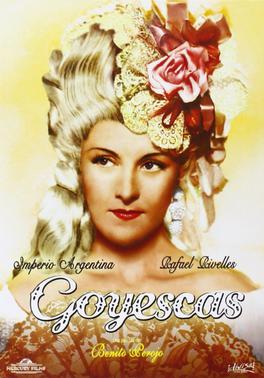
Goyescas is a 1942 Spanish musical film directed by Benito Perojo and starring Imperio Argentina, Rafael Rivelles and Armando Calvo. The film is an adaptation of the 1916 zarzuela Goyescas by Enrique Granados, and also drew inspiration from the work of the artist Francisco Goya. The film was part of the popular trend for operetta films in Europe during the era. Perojo had been planning the production for around a decade before it was ultimately made.

Arantxa Aguirre Carballeira is a Spanish film director specialising in documentaries. She is also a scriptwriter. She is the daughter of noted Spanish film director Javier Aguirre and Spanish actress Enriqueta Carballeira.
The Maiden and the Nightingale is a piano piece by the Spanish composer Enrique Granados. The piece, which lasts about six minutes, is part of his suite Goyescas which was inspired by the work of the painter Goya.












